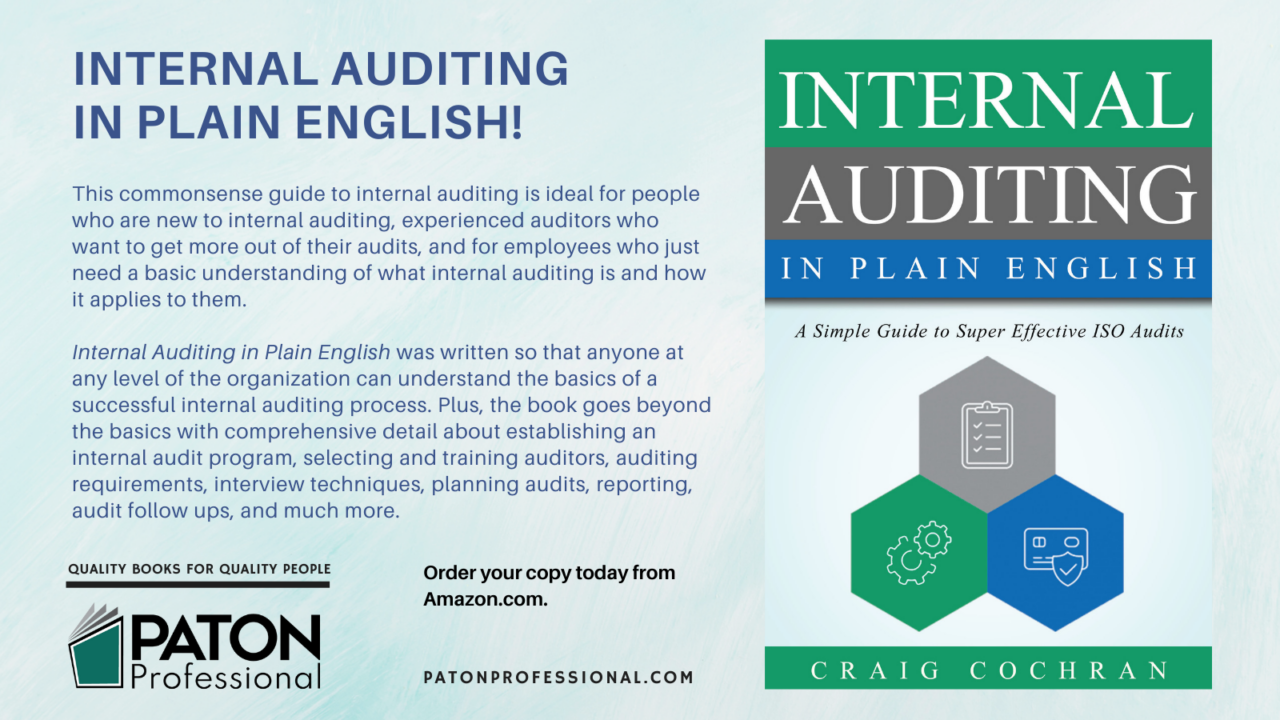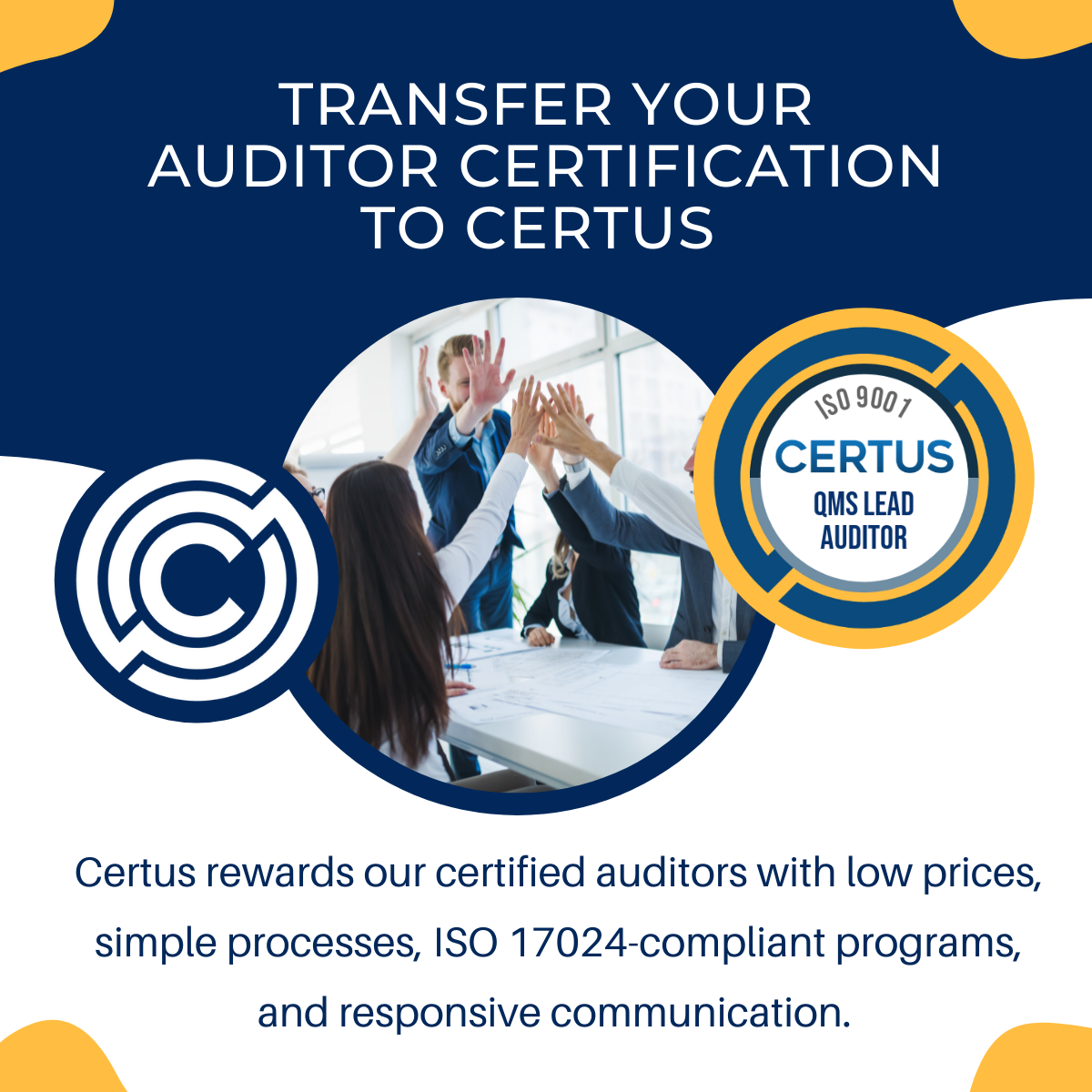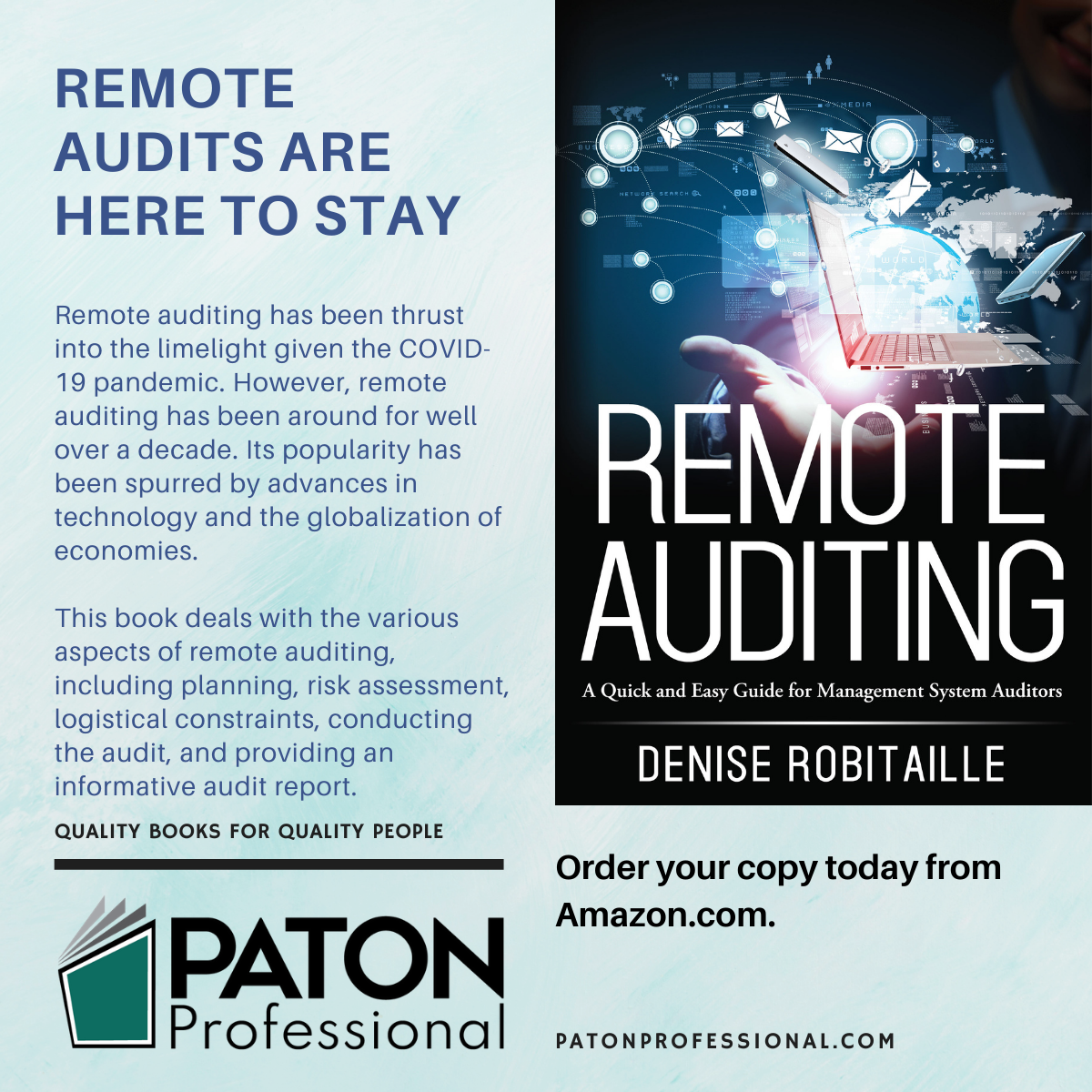by Craig Cochran
Have you ever felt anxious about something that was about to happen? Imagine if the “thing” was called an audit. Your anxiety would be sky-high. The truth is that audits are always a little nerve wracking, no matter how much preparation and communication happens ahead of time. An opening meeting aims to remove this anxiety and sets the tone for a smooth, friendly audit that is focused on improving processes.
The name “opening meeting” is probably a little grandiose for what this really entails. We’re talking about a short, usually informal meeting to discuss the audit plan and basic details of the audit. For an internal audit, the opening meeting can be accomplished in little more than five minutes. The auditor briefly goes over the audit plan line by line and asks if any changes are needed. Questions about the audit are addressed and any lingering anxiety is dealt with. A friendly and informal opening meeting gets the ball rolling toward a successful audit.
The opening meeting typically takes place in an office or in a conference room for larger groups. Participants include the auditor(s) and the main auditee contact. I have led opening meetings with as few as two and as many as 200 people. The exact size of the opening meeting depends on the organization being audited and the number of people they want to invite. During your pre-audit communication, it’s helpful to tell your organization contact that you’ll be having an informal opening meeting prior to the start of the audit. You can mention that they are welcome to invite whatever personnel they’d like to attend, and that you’ll be covering some basic details related to the audit.
The lead auditor conducts the opening meeting. If there is a team taking part in the audit, there’s not much for the other auditors to do or say. After all, the whole meeting lasts only a few minutes and provides an overview of the audit. The closing meeting will have more opportunities for involvement by other auditors.
You may be wondering, why is something that only lasts a few minutes so important? The opening meeting may sound inconsequential, but it isn’t. The event may be simple and brief, but the outcomes are critical. Consider these results from the opening meeting:
- Comfort about the audit process
- Spirit of partnership in improvement
- Warm introduction to key participants (auditors and usually the managers of the areas being audited)
- Agreement on any scheduling changes that must be made
- Answering of questions
- Trust that the auditors are seeking conformity not nonconformity
If the organization has been audited multiple times before and is already comfortable with the process, the opening meeting will be less important. It never gets skipped, though. You always start with an opening meeting to give the auditing process the dignity it deserves and briefly cover what will happen once the auditing begins.

It’s common for auditors to use a checklist to help them conduct the opening meeting. Here is a detailed explanation of each agenda item:
- Welcome: Begin the opening meeting with a warm welcome to everybody present. A big smile and a friendly voice will help establish a tone of cooperative improvement. As part of your welcome, you may also want to let everybody know that the opening meeting won’t last more than a few minutes. “Thanks for coming to our opening meeting this morning. We’re just going to cover a few details about today’s audit and let everybody get on their way.”
- Introductions: Introductions may or may not be necessary, depending on everybody’s familiarity. Make sure that nobody is a stranger. Knowing somebody is the first step toward trusting them. “My name is Craig Cochran and I’ll be leading the audit. Dennis Kelly will be auditing with me. And this is the manager of the production area, Tim Israel. We appreciate you welcoming us to your department, Tim.”
- Scope: Describe the boundaries of the audit in terms of departments, functions, and/or processes. A clearly defined audit scope helps to remove confusion. “The scope of today’s audit will be the production area, which includes the molding, machining, and finishing processes.”
- Criteria: Communicate the general requirements against which the audit will be conducted. This usually includes an outside standard of some sort (such as ISO 9001) and the organization’s own policies and procedures. There’s no need to list specific procedures, unless the audit criteria is very narrow. “We’ll be auditing against ISO 9001:2015, your documented management system, and applicable customer requirements.”
- Objective: Complete your introductory remarks by stating the objective of the audit. Possible objectives include preparing for ISO 9001 certification, addressing organizational weaknesses, and identifying opportunities for improvement. Everything that happens in an organization should have a purpose, and an audit is no exception. “The objective of today’s audit is to prepare for our ISO 9001:2015 transition audit, as well as to identify opportunities for improvement.”
- Review audit plan: Now you get into the details of the audit plan. I find that it’s helpful to go over every angle to remove the potential for confusion. Here are the most common details:
- The duration of the audit. “We’ll begin the audit at 8:30 a.m. and continue until 11:00 a.m.”
- Departments and/or processes to be audited and times. “Molding will be audited from 8:30 a.m. until 9:15 a.m., machining will be audited from 9:15 a.m. until 10:00 a.m., and finishing will be audited from 10:00 a.m. until 11:00 a.m.”
- Documents to be used during the audit. “We’ll be using departmental procedures, customer specifications, and the ISO 9001:2015 standard during our audit.”
- The anticipated schedule for closing meeting. “We’re planning on having a closing meeting at 11:30 a.m. today. At that time, we’ll go over all the findings and discuss next steps. Feel free to invite anyone you think would benefit from being there.”
- Sampling: The audit will be a representative sampling of evidence, not a 100 percent inspection. This should be obvious to all participants, but it is important to declare this limitation before the audit begins. “We will select a random and representative sampling of evidence during the audit, with the objective of producing a balanced picture of operations. There is no way we could possibly conduct a 100 percent inspection of everything happening here, but we believe our sample will provide an accurate snapshot of current operations.”
- Company Rules: Clearly state the auditors’ intention to following all company rules and safety precautions. “We know that ear plugs and safety glasses are required while in the production area, and have come equipped with these personal protection items. Also, we’ll make sure to stay within the painted yellow lines that indicate pedestrian walkways. As you’ve indicated, we will also stay with our company guide at all times.”
- Confidentiality: Make a general commitment to maintain confidentiality related to the evidence gathered and conclusions generated during the audit. “Everything we see during the audit and all the evidence we gather will be held in strict confidence. We will not share it with any parties outside of your organization.”
- Confirm changes: It’s not uncommon for emergencies and unforeseen events to emerge right before an audit. These can range from employee injuries, to visits from regulatory bodies, to urgent customer orders. Make sure to confirm that the audit plan is OK as published. If not, what changes need to be made? Try to accommodate any changes within reason. In rare cases, the audit may need to be rescheduled. “Do we need to make any changes to our audit plan? Let me know and we’ll talk about possible alternatives. We don’t mind changing the timing of any of our activities to suit your operations.”
- Questions: In a gathering as relaxed as the opening meeting, questions are usually addressed as they come up. Explicitly ask for questions at this point in case anyone was waiting on a cue. “Does anybody have any questions or comments? Please don’t be shy. All your thoughts are very important to us.”
- Thanks again: Conclude the opening meeting with one more thanks to all in attendance. Thank them for coming to the opening, and also for their cooperation and assistance related to the audit. Thank you is something you can’t say too much during an audit. “Thanks again for having us here today and allowing us to audit. I look forward to making this a real win-win activity, because I expect that we will learn a lot from you.”
Through a brief opening meeting, you’ve invested in the success of the audit. The plan for the audit has been discussed and agreed to, and a feeling of mutual trust has been established. Now you’re ready for a successful audit.
About the author
Craig Cochran is the North Metro Regional Manager with Georgia Tech’s Economic Development Institute. He has assisted more than 5,000 companies since 1999 in QMS implementation, problem solving, auditing, and performance improvement. Cochran is a Certified Quality Manager, Certified Quality Engineer, and Certified Quality Auditor through the American Society for Quality. He is certified as a QMS Lead Auditor by Certus Professional Certification.
He is the author of numerous books, including Internal Auditing in Plain English, from which this article was excerpted.
Copyright 2016 by Craig Cochran. All rights reserved.






